Molecular Body Guards For Neurons

Molecular body guards for neurons
In the brain, patterns of neural activity are perfectly balanced. The interplay between activating and inhibitory neurotransmitters ensures that the level of activity stays within the physiological range. During an epileptic attack excitation gains the upper hand resulting in the death of neurons. Researchers of the Bonn University Medical School have now discovered a key player in a signal transduction cascade, which protects neurons from hyperexcitation-induced cell death. These results open a new direction for the development of novel therapy options. The results are now published in “The Journal of Neuroscience“.
Pathophysiological activity often triggers neuronal cell death. This can for example be observed after an epileptic insult. The cause for this hyperexcitation is excessive release of the signaling molecule glutamate. “This neurotransmitter can switch on signaling cascades that act neurotoxic”, says Prof. Dr. Schoch McGovern of the Institute of Neuropathology and the Department of Epileptology at the University Clinic Bonn. However, neurons try to protect themselves and prevent the damaging hyperexcitation.
The molecular nature of these “body guards” is so far unresolved. Accumulating evidence shows transcription factors to play an essential role in the processes by which neurons protect themselves. These factors switch on certain genes, which then via signal transduction cascades result in the production of neuroprotective substances. These in turn counteract the damaging glutamate-induced hyperexcitability.
Increased neuronal cell death in the absence of Syt10
The team of Prof. Dr. Schoch McGovern could now show that the protein Synaptotagmin 10 (Syt10) is an integral part of this protective shield. If rats for example experience an epileptic seizure, the amount of Syt10 in the hippocampal formation of the brain strongly increases. The researchers used neurons from mice, in which the Syt10 gene had been ablated, and stimulated them with a glutamate like substance. This treatment resulted in substantial neuronal death.
NPAS4 modulates the production of protective factors
The research team discovered, which transcription factor activates the gene for Syt10 in response to pathophysiological neuronal activity. This essential member of the neuronal body guard is called NPAS4. The researchers cultured rodent neurons and added several transcription factors. NPAS4 activated the Syt10 gene and required Syt10 to exert its neuroprotective function. “NPAS4 triggers a signaling cascade that results in the production of neuroprotective factors”, says Prof. Dr. Schoch McGovern.
Search for novel therapy approaches
The molecular identity of the neuroprotective substances is still unknown. “A potential candidate, the insulin-like growth factor IGF-1, was not able to reverse the increased neuronal cell death in the absence of Syt10”, reports the neurobiologist. The next step therefore is to test other substances. Once the identity of the neuroprotective body guards is revealed, novel avenues for therapy development open up, for example for stroke and epilepsy patients. “The goal would be to administer these protective substances from the outside in order to prevent neuronal cell death in the brain”, says Prof. Dr. Albert Becker, a medical doctor, who was part of the study. However, there is still a long road ahead.
More Posts from Ritasakano and Others
Tristeza! Muito descaso com a Ciência no Brasil!!
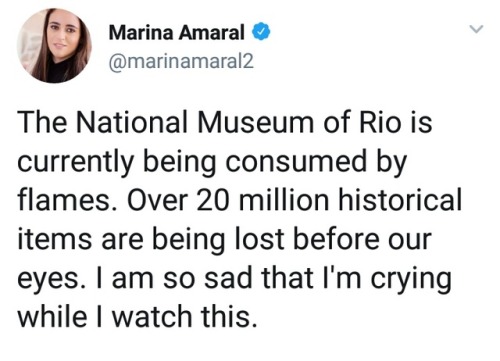
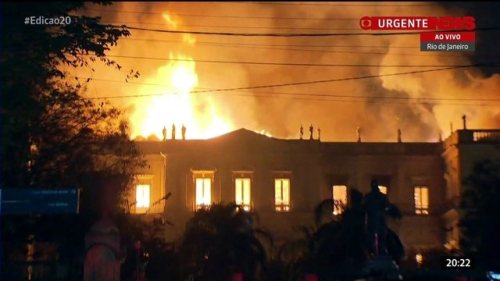



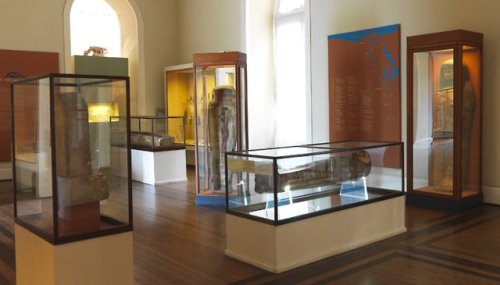

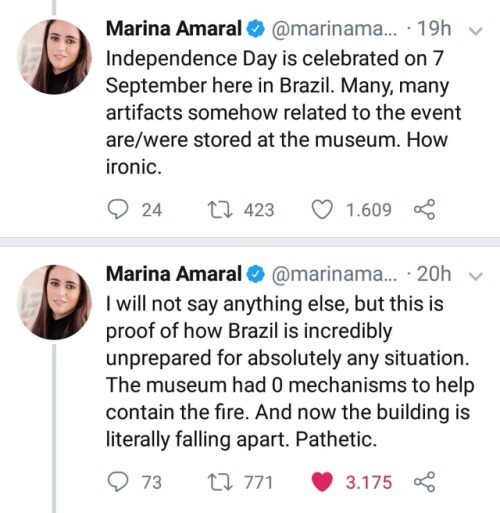
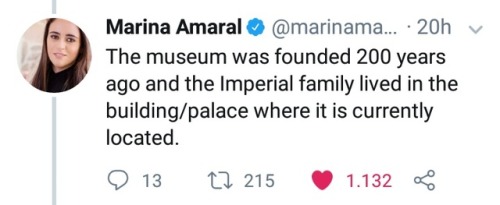
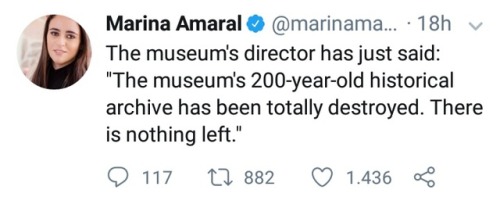
















This happened yesterday in Brazil and I’m from Mexico, but this is a major tragedy and loss to science, culture and humanity.😢💔 (source)
A Wider Set of Eyes on the Universe
After years of preparatory studies, we are formally starting an astrophysics mission designed to help unlock the secrets of the universe.
Introducing…
the Wide Field Infrared Survey Telescope, aka WFIRST.

With a view 100 times bigger than that of our Hubble Space Telescope, WFIRST will help unravel the secrets of dark energy and dark matter, and explore the evolution of the cosmos. It will also help us discover new worlds and advance the search for planets suitable for life.
WFIRST is slated to launch in the mid-2020s. The observatory will begin operations after traveling about one million miles from Earth, in a direction directly opposite the sun.

Telescopes usually come in two different “flavors” - you have really big, powerful telescopes, but those telescopes only see a tiny part of the sky. Or, telescopes are smaller and so they lack that power, but they can see big parts of the sky. WFIRST is the best of worlds.
No matter how good a telescope you build, it’s always going to have some residual errors. WFIRST will be the first time that we’re going to fly an instrument that contains special mirrors that will allow us to correct for errors in the telescope. This has never been done in space before!
Employing multiple techniques, astronomers will also use WFIRST to track how dark energy and dark matter have affected the evolution of our universe. Dark energy is a mysterious, negative pressure that has been speeding up the expansion of the universe. Dark matter is invisible material that makes up most of the matter in our universe.
Single WFIRST images will contain over a million galaxies! We can’t categorize and catalogue those galaxies on our own, which is where citizen science comes in. This allows interested people in the general public to solve scientific problems.
Make sure to follow us on Tumblr for your regular dose of space: http://nasa.tumblr.com

Niigata Vista do Hotel Nikko
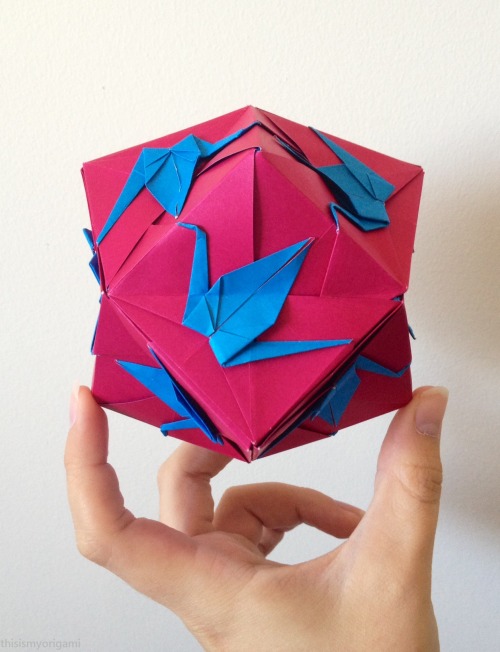
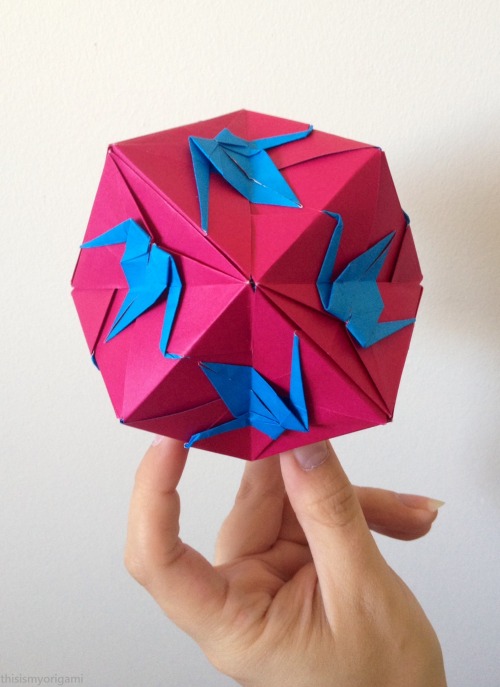
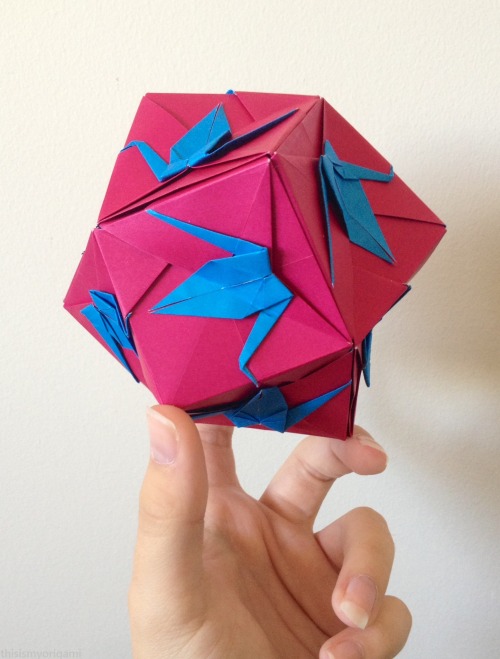
Crane Trisoctahedron designed by Fumiaki Shingu
Instructions



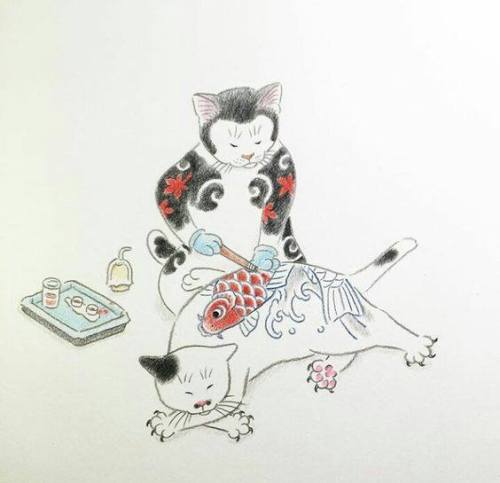

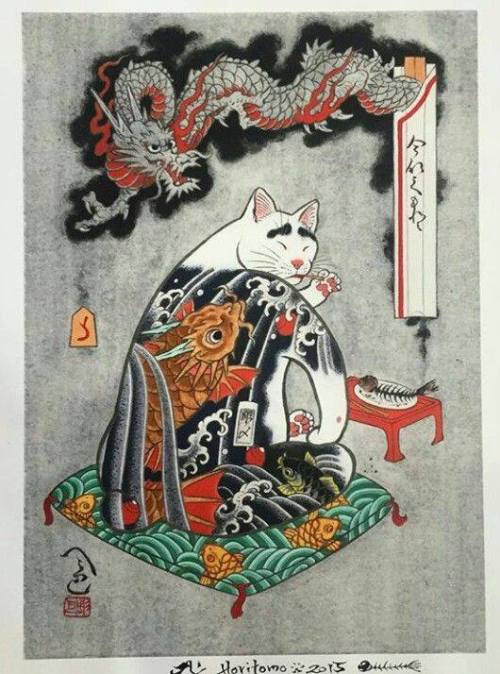






kazuaki horitomo’s tattooed cats.
Lindas imagens!
The Beautiful Things inside Your Head: Winners of the 10th Annual Art of Neuroscience Contest
Winner: Lidija Kononenko

Artist Kononenko described this interactive piece as “a microscope specimen, a map of symptoms, and an investigation of the unknown” in a statement accompanying it. Viewers can zoom in and explore the details of a microscope image of the peripheral nerve system, which is overlaid by textual facts and poetic phrases about sleep.Sleep is “a voluntary act of losing one’s own consciousness,” Konenenko explained in her statement. The poetic snippets resemble the fragmented thoughts humans have while falling asleep. And zooming in and out of the image represents the transition between wakefulness and sleep. Additionally, 31-3594 allows the viewer to act as a pathologist, achieving the goal of blending neuroscience and art. In assessing this unique piece, the jurors praised it for “the interactivity and playful combination of imagery of a human peripheral nerve with a text-based story that unfolds at various scales and highlights the role of the nervous system in the human condition.”
Honorable Mentions

Red Haze by Nicki Coveña
A tsunami of red dots dominates this image by neuroscientist Coveña. The bright red color comes from a fluorescent protein, which was used to visualize the workings of TBR1—a gene that synthesizes the protein that regulates the information transfer from DNA to messenger RNA in vertebrate embryo development. “The out-of-focus view makes one guess at what details are hidden below,” the jurors wrote.

Motor White Matter Networks of the Human Brain by Sanja Budisavljevic
In this piece, neuroscientist Budisavljevic superimposed color onto a 19th-century black-and-white drawing of a brain based on a postmortem dissection. Each color indicates a different “highway,” or white matter pathway connecting particular regions of gray matter and allowing information to be transferred. Red indicates the most prominent highway, which links the cortex and spinal cord. “This pathway carries the messages to and from the body and allows us to function in our sensory world,” Budisavljevic says. Green represents the connection that supports coordination, and blue shows the one that regulates movements.

Bdl by Paméla Simard (Alex Tran, photographs)
Artist Simard partnered with Hunter Shaw, a neuroscientist then at McGill University, to create a series of delicate wooden sculptures. “The various installations were created from fluorescent microscopy images representing the visual system of the fruit fly brain,” Simard wrote in her statement. The intricate details of the fruit fly visual system were made possible by first laminating the thin slices of different types of wood together, then hand cutting the result to mimic the microscope images.
More Art from 2020 Gallery

Whale Retina Rainbow by Elena Vecino Cordero and Luis López Vecino
In February 2019 the death of a whale in Sopelana Beach in Spain made the local news. The beach happened to be close to the University of the Basque Country, where biologist Vecino Cordero works. Seizing the opportunity, she and some volunteers extracted the eye of the whale and took it back to her ophthalmology research group for further study. The image was produced as a part of their research. The whale’s retina was imaged using scanning electron microscopy. And later López Vecino added the colors using Adobe Photoshop.

Sensing Spin by Dan Jagger
Physiologist Jagger used a high-resolution microscope to capture this image. It shows mechanosensory hair cells located in the inner ear that play a role in the sense of balance. A protein called actin is within bundles of stereocilia and is stained yellow. Actin helps the bundles to stand upright, so when the human head turns, they can detect the movement of the fluid they are immersed in. The hair-cell nuclei are stained with cyan.

The Protection of Nature Starts in Our Mind by Robert Luck
Luck is a neuroscientist at Heidelberg University in Germany who studies the development of the cerebellum, located where the spinal cord meets the brain. Alarmed by climate change and deforestation, he created a “mind forest” that resembles bird’s-eye-view photographs of real forests. The “trees” are 65 individually traced images of mice’s Purkinje neurons, which play important roles in controlling coordination and movements. “I chose the number 65 to represent the number of years needed for the rainforest to regrow and gain back at least 80% of its diversity,” Luck wrote in his statement. “[Sixty-five] years—a human lifetime!”

Memories and Patterns: Oligodendrocytes by Shanthi Chandrasekar
Oligodendrocytes are glial cells that support and insulate long neuronal axons. The cells’ lipid membrane wraps around the axons to strengthen the structure, as well as to help neurons to send signals quickly. “A single oligodendrocyte can connect with multiple axons,” artist Chandrasekar wrote in her statement. “In this [pen-and-ink] drawing, I have tried to bring out the connectedness of the oligodendrocytes and the axons.”

Shelter in Place by Geinene Carson
As its title suggests, this piece represents “the artist’s interpretation of the pandemic experience” while sheltering in place because of COVID-19, according to artist Carson’s statement. This acrylic-on-canvas piece is a part of a series entitled Neuron, which started as “visual prayers for our daughter with a rare genetic disorder,” Carson wrote on her Web site. While Shelter in Place implies physical restrictions, Carson, who is based in Atlanta, draws inspiration from the neural network, “because as important as our physical surroundings are to our state of living, our thought life holds the key to thriving within whatever the circumstances may be,” she wrote.

Bridges between Genesis and Neuroscience: Triplets by Rui Rodrigues
This image features three neurospheres—clusters of neural stem or progenitor cells—that are similar in size and shape. Because of their similarity, neurobiologist Rodrigues entitled the piece Triplets. The vibrant colors come from “antibodies coupled with fluorescent tags to label specific proteins,” he says.

The Transfer by Geinene Carson

Motor Neuron Architectural Digest by Stefanie Hauck - University of Bonn

Illuminating The Vascular Network - EPFL by Marwan Abdellah
-
 pleasurehunter2000 liked this · 4 years ago
pleasurehunter2000 liked this · 4 years ago -
 manooriified liked this · 9 years ago
manooriified liked this · 9 years ago -
 darcythelunatic liked this · 9 years ago
darcythelunatic liked this · 9 years ago -
 bigblackbailey liked this · 9 years ago
bigblackbailey liked this · 9 years ago -
 anattempttolearnthemedschoo-blog liked this · 9 years ago
anattempttolearnthemedschoo-blog liked this · 9 years ago -
 occasionallywistful liked this · 9 years ago
occasionallywistful liked this · 9 years ago -
 thelifeinmyhand reblogged this · 9 years ago
thelifeinmyhand reblogged this · 9 years ago -
 toastmcroasty liked this · 9 years ago
toastmcroasty liked this · 9 years ago -
 phroyd reblogged this · 9 years ago
phroyd reblogged this · 9 years ago -
 phroyd liked this · 9 years ago
phroyd liked this · 9 years ago -
 llcnsnnts reblogged this · 9 years ago
llcnsnnts reblogged this · 9 years ago -
 thoths-foundry-blog reblogged this · 9 years ago
thoths-foundry-blog reblogged this · 9 years ago -
 syrehoved reblogged this · 9 years ago
syrehoved reblogged this · 9 years ago -
 childofs1n reblogged this · 9 years ago
childofs1n reblogged this · 9 years ago -
 rowrrr liked this · 9 years ago
rowrrr liked this · 9 years ago -
 soundgrammar liked this · 9 years ago
soundgrammar liked this · 9 years ago -
 beauvale reblogged this · 9 years ago
beauvale reblogged this · 9 years ago -
 beauvale liked this · 9 years ago
beauvale liked this · 9 years ago -
 bad-0mens reblogged this · 9 years ago
bad-0mens reblogged this · 9 years ago -
 mullercells reblogged this · 9 years ago
mullercells reblogged this · 9 years ago -
 mullercells liked this · 9 years ago
mullercells liked this · 9 years ago -
 robotoroboto-blog reblogged this · 9 years ago
robotoroboto-blog reblogged this · 9 years ago -
 robotoroboto-blog liked this · 9 years ago
robotoroboto-blog liked this · 9 years ago -
 ritasakano reblogged this · 9 years ago
ritasakano reblogged this · 9 years ago -
 the-sleeping-gay liked this · 9 years ago
the-sleeping-gay liked this · 9 years ago -
 medic200 liked this · 9 years ago
medic200 liked this · 9 years ago -
 davethoyo-blog reblogged this · 9 years ago
davethoyo-blog reblogged this · 9 years ago -
 startstopgo liked this · 9 years ago
startstopgo liked this · 9 years ago -
 hairuo2012 liked this · 9 years ago
hairuo2012 liked this · 9 years ago -
 neuroboom-blog reblogged this · 9 years ago
neuroboom-blog reblogged this · 9 years ago -
 d2drake reblogged this · 9 years ago
d2drake reblogged this · 9 years ago -
 infofactoryin reblogged this · 9 years ago
infofactoryin reblogged this · 9 years ago -
 bocejando liked this · 9 years ago
bocejando liked this · 9 years ago -
 di-dee reblogged this · 9 years ago
di-dee reblogged this · 9 years ago -
 davethoyo-blog liked this · 9 years ago
davethoyo-blog liked this · 9 years ago -
 superjaybird liked this · 9 years ago
superjaybird liked this · 9 years ago -
 iminlovewithdickgrayson-blog liked this · 9 years ago
iminlovewithdickgrayson-blog liked this · 9 years ago